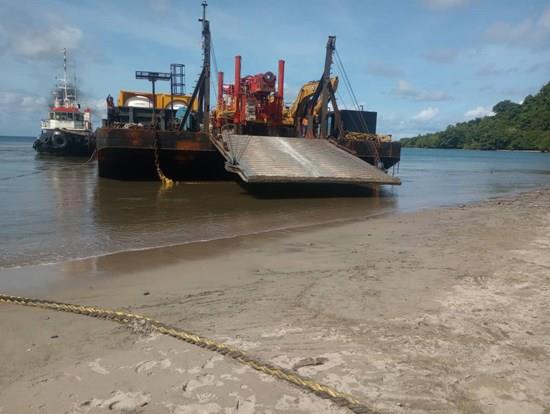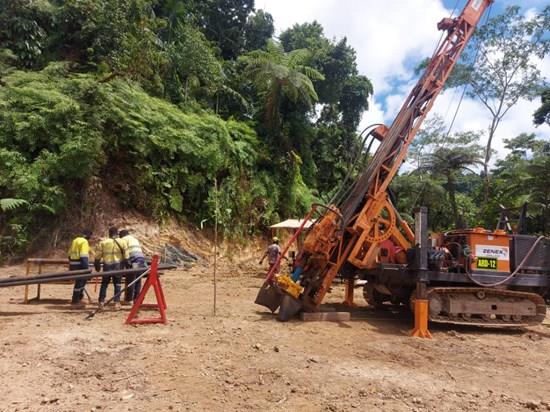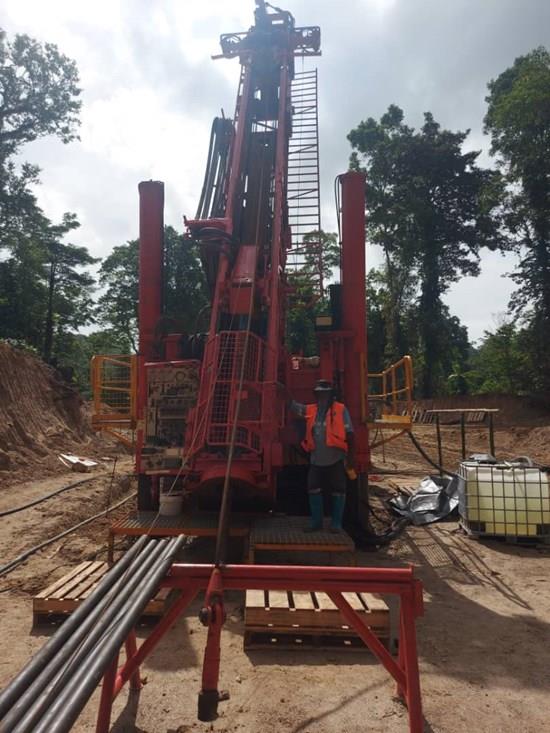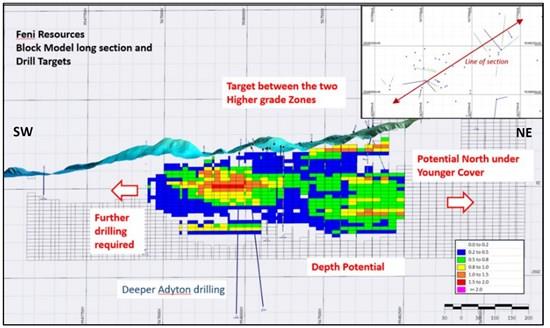
Adyton Resources Announces Drilling Advances At 100%-Owned Feni Island Gold-Copper Project
| AMD002: 250 m to end of hole, entire hole mineralized | |
| AMD004: ends in gold and copper mineralization | |
| AMD005: ends in copper mineralization | |
| AMD006: end in gold mineralization | |
| AMD007: ends in gold mineralization | |
| KAD002: ends in gold mineralization | |
| MAD001: ends in gold mineralization, no copper assays | |
| MAD005: ends in gold and copper mineralization | |
| MAD009: ends in gold mineralization |
On the completion of this program it is expected that copper will also be reported in a newly informed MRE.
Geological Background
Lihir Island is part of the Tabar to Feni island chain located in the former fore-arc basin of the New Ireland arc system in the Bismarck Archipelago, NW Papua New Guinea (Fig. 1). Cessation of SW-directed subduction of the Pacific plate due to clogging of the subduction zone by the buoyant Ontong-Java plateau in the middle Tertiary led to plate rotation and a shift from compressional to extensional regimes (Coleman and Kroenke, 1981). As a consequence, calc-alkaline subduction-related magmatism within the New Ireland arc ceased and back-arc rifting commenced in the Manus basin around 3.5 Ma ago due to NE-directed subduction of the Solomon Sea microplate. Due to the curvature of the New Britain trench, narrow, vertically extensive slab tears developed, which propagate beneath Lihir and Feni islands (Holm and Richards, 2013; Lindley et al., 2016).
Rift-related trans-crustal extensional structures initiated adiabatic decompression melting of the mantle underlying the New Ireland forearc basin and generated alkaline magmatism that produced the Tabar, Lihir, Tanga, and Feni Islands (Müller et al., 2001) as well as numerous submarine volcanoes such as Conical Seamount (Brandl et al., 2020). Volcanic activity in the Tabar-Lihir-Tanga-Feni island chain (Fig. 2) started on Simberi Island (Tabar island group) in the New Ireland fore arc region (Rytuba et al., 1993) and most recent on-land eruption is recorded on Feni Island dated at about 2300 years ago (Licence et al., 1987).
Similar to Lihir, Feni Island was formed by alkaline magmatism with distinctly high oxygen fugacities (Müller et al., 2001; Schirra et al., 2024). Whereas Lihir is composed of five stratovolcanoes, Feni Island consists of one single stratovolcano that is emplaced by a younger maar-type diatreme (Fig. 3). The composition of the alkaline rocks that make up both islands is very similar with distinctly low HFSE contents (Zr<110, Hf<3 ppm) reflecting their derivation in an island arc-setting. Overall, the alkaline magmas that formed Feni Island are slightly more evolved than those from Lihir. Limited drilling at Feni intersects hydrothermally altered trachyandesites, monzodiorites, monzonites and, more rarely, syenite intrusions as well as late-stage dacite dykes. Syenite intrusions have not been recorded at Lihir, but in places, there are trachybasalts reflecting their slightly more mafic compositions (Müller et al., 2001).

Legal Disclaimer:
MENAFN provides the
information “as is” without warranty of any kind. We do not accept
any responsibility or liability for the accuracy, content, images,
videos, licenses, completeness, legality, or reliability of the information
contained in this article. If you have any complaints or copyright
issues related to this article, kindly contact the provider above.
Most popular stories
Market Research

- Bydfi Joins Korea Blockchain Week 2025 (KBW2025): Deepening Web3 Engagement
- Cregis Joins TOKEN2049 Singapore 2025
- SPAYZ.Io White Paper Explores Opportunities, Challenges And Ambitions In Payments Industry
- Cregis At TOKEN2049 Singapore 2025: Unlocking The Next Frontier Of Adoption
- Space And Time Integrates USDC Payments For ZK Coprocessing To Expand Access To Verifiable Onchain Compute
- Codego Launches Whitelabel Devices Bringing Tokens Into Daily Life























Comments
No comment